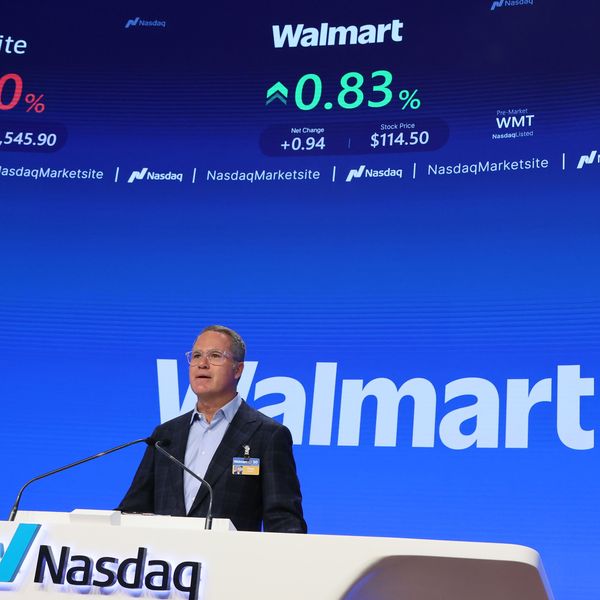Fracking the World: Energy Companies Set Their Sights Globally
Africa, Latin America may see biggest growth in fracking
While the drilling technique known as fracking has primarily occurred in North America, energy companies are now setting their sites far and wide to extend its use across the globe. The U.S. can expext to see even more fracking in the near future.
The energy news service Platts reports:
And although the US and Canada comprise the largest chunk of the hydraulic fracturing market by far -- just shy of 90% -- activity in other markets is expected to rise over the next several years, Richard Spears, vice president of oilfield consultants Spears & Associates, said during a Credit Suisse conference call about the hydraulic fracturing market. "If that international piece is $4 billion, $5 billion [in 2011], I think five years from now it grows to $10 billion," Spears said. Areas likely to show the biggest growth globally are Latin America, particularly Argentina, where shale drilling has gotten off to a running start, and parts of Africa. "Argentina sounds, looks and smells very much like West Texas," said Spears, adding Latin America currently accounts for $1.7 billion/year of fracturing revenues.
Meanwhile, the consultant projected that horizontal drilling -- most commonly used in shale and unconventional plays -- in the US would rise nearly 16% this year to around 18,600 wells, up from 16,100 last year and 12,225 wells in 2010.
Concerns of earthquakes in Ohio and the UK, well blowouts and water contamination following fracking operations have not deterred most companies' plans. Platts continues:
"Of the 15 frac companies I've visited with in the last three months, [just] one is cautious" about adding capacity this year, he said, while the rest are adding capacity at about the same pace as they did last year.
An Urgent Message From Our Co-Founder
Dear Common Dreams reader, The U.S. is on a fast track to authoritarianism like nothing I've ever seen. Meanwhile, corporate news outlets are utterly capitulating to Trump, twisting their coverage to avoid drawing his ire while lining up to stuff cash in his pockets. That's why I believe that Common Dreams is doing the best and most consequential reporting that we've ever done. Our small but mighty team is a progressive reporting powerhouse, covering the news every day that the corporate media never will. Our mission has always been simple: To inform. To inspire. And to ignite change for the common good. Now here's the key piece that I want all our readers to understand: None of this would be possible without your financial support. That's not just some fundraising cliche. It's the absolute and literal truth. We don't accept corporate advertising and never will. We don't have a paywall because we don't think people should be blocked from critical news based on their ability to pay. Everything we do is funded by the donations of readers like you. Will you donate now to help power the nonprofit, independent reporting of Common Dreams? Thank you for being a vital member of our community. Together, we can keep independent journalism alive when it’s needed most. - Craig Brown, Co-founder |
While the drilling technique known as fracking has primarily occurred in North America, energy companies are now setting their sites far and wide to extend its use across the globe. The U.S. can expext to see even more fracking in the near future.
The energy news service Platts reports:
And although the US and Canada comprise the largest chunk of the hydraulic fracturing market by far -- just shy of 90% -- activity in other markets is expected to rise over the next several years, Richard Spears, vice president of oilfield consultants Spears & Associates, said during a Credit Suisse conference call about the hydraulic fracturing market. "If that international piece is $4 billion, $5 billion [in 2011], I think five years from now it grows to $10 billion," Spears said. Areas likely to show the biggest growth globally are Latin America, particularly Argentina, where shale drilling has gotten off to a running start, and parts of Africa. "Argentina sounds, looks and smells very much like West Texas," said Spears, adding Latin America currently accounts for $1.7 billion/year of fracturing revenues.
Meanwhile, the consultant projected that horizontal drilling -- most commonly used in shale and unconventional plays -- in the US would rise nearly 16% this year to around 18,600 wells, up from 16,100 last year and 12,225 wells in 2010.
Concerns of earthquakes in Ohio and the UK, well blowouts and water contamination following fracking operations have not deterred most companies' plans. Platts continues:
"Of the 15 frac companies I've visited with in the last three months, [just] one is cautious" about adding capacity this year, he said, while the rest are adding capacity at about the same pace as they did last year.
While the drilling technique known as fracking has primarily occurred in North America, energy companies are now setting their sites far and wide to extend its use across the globe. The U.S. can expext to see even more fracking in the near future.
The energy news service Platts reports:
And although the US and Canada comprise the largest chunk of the hydraulic fracturing market by far -- just shy of 90% -- activity in other markets is expected to rise over the next several years, Richard Spears, vice president of oilfield consultants Spears & Associates, said during a Credit Suisse conference call about the hydraulic fracturing market. "If that international piece is $4 billion, $5 billion [in 2011], I think five years from now it grows to $10 billion," Spears said. Areas likely to show the biggest growth globally are Latin America, particularly Argentina, where shale drilling has gotten off to a running start, and parts of Africa. "Argentina sounds, looks and smells very much like West Texas," said Spears, adding Latin America currently accounts for $1.7 billion/year of fracturing revenues.
Meanwhile, the consultant projected that horizontal drilling -- most commonly used in shale and unconventional plays -- in the US would rise nearly 16% this year to around 18,600 wells, up from 16,100 last year and 12,225 wells in 2010.
Concerns of earthquakes in Ohio and the UK, well blowouts and water contamination following fracking operations have not deterred most companies' plans. Platts continues:
"Of the 15 frac companies I've visited with in the last three months, [just] one is cautious" about adding capacity this year, he said, while the rest are adding capacity at about the same pace as they did last year.

